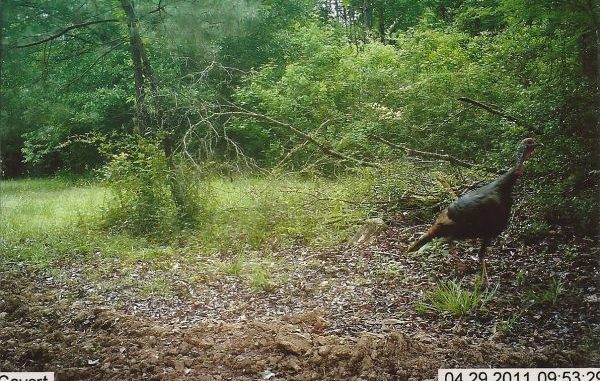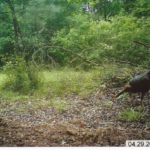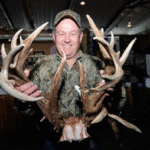
Hunting success comes from planning ahead.
Even though the 2012 turkey season has ended and the 2012 deer season is months away, it is not time to leave the woods and go fishing; there is plenty of work to do to get the habitat in shape for the new turkey poults and for the upcoming deer season.
Besides, the spring squirrel season is under way, and there are plenty of bushy-tails to train a new puppy with — just watch out for the snakes.
2012 turkey season wrap-up
From what I experienced and heard it was a great 2012 turkey season. It will be interesting to see what the final tally is when all the band reports are counted.
The Moreland clan put three birds in the freezer, and I tried to help a friend connect with a tom but he went to sleep in the turkey box.
After the tom had left the patch, I walked over and asked him why he did not shoot the turkey. He looked at me with a puzzled look, and asked “What turkey?”
Oh well, you can lead a hunter to the toms, but you can’t keep him awake.
Before leaving the fields to chase, trout be sure the fields are ready for the turkey poults.
If all you have are fields full of thick rye grass waist high, the young poults are not going to be able to catch insects and find the food they need to grow and survive.
Young turkeys need open ground to find insects, so it is a must that there is room for them to walk around and catch bugs. This would require some bush-hogging and perhaps some discing.
Check the fields for turkey nests before clipping.
After killing a tom on Camp David, I noticed the turkeys seemed to disappear. But after doing some clipping and plowing in preparation for the spring planting, the trail cameras started photographing hens and jakes (probably the four that had been feeding on the property all year).
I will be planting some sunflowers and sorghum for the turkeys. Right now there is plenty of grass seeds, bare ground for scratching and finding other seeds, and various heights of vegetation.
The tall grass has the grass hoppers and katydids, while the short grass contains crickets and other insects.
The red mulberry fruit was plentiful this spring and, yes, there are still acorns on the ground. Other soft mast trees such as black cherry produced a good crop of berries, also.
The key to good turkey hunting is good reproduction; therefore, it is a must that the habitat be adequate for turkey poults to grow and survive.
If you had planned on doing some tree planting, it may be too late for this activity. Young trees should be planted in late winter to allow time for the roots to connect with the ground and ensure survival.
Unless you have a way to water the young trees, it’s better wait until next year.
Turkeys will utilize cutover habitat, so if your management plan dictates some timber cutting, now would be the time to move forward with this and allow time for new plant growth in the fall.
2011 deer season wrap-up
We had the awards ceremony for the Bowie Outfitters Big Buck Contest on April 28, and some more deer were added to the list of recognition and record-book deer killed in Louisiana this past season.
The non-typical buck that Alton “Tadpole’ McLeod killed on the Tensas River National Wildlife Refuge was officially scored at the contest, and it is the highest-scoring buck killed this past season. This buck officially scored 204 5/8 inches in the non-typical category and will qualify for listing in the all-time Boone and Crockett Record Book, as well as the all-time Pope and Young Record Book.
What is great about this buck is that it was killed on public land; if you think because you do not have land to hunt on you can’t hunt, think again. Louisiana has lots of public land open for hunting, so get after it.
Another public-land buck was the 143 7/8-inch typical deer that Keith Pease killed on Red River WMA in Concordia Parish. Keith killed this buck with a muzzleloader, and it will qualify for listing in the all-time Muzzleloader Record Book, as well as being listed on the state record list.
There were also plenty of good deer killed on private lands and hunting clubs.
Mark Huvall killed a 166 5/8-inch typical buck on some private land in Avoyelles Parish with a recurve bow, and the deer will qualify for the Boone and Crockett Three Year Recognition Book, as well as the all-time Pope and Young Record Book.
If you want to see more of the big bucks killed in the state during the 2011 deer season visit the LDWF website, click on hunting, click on deer and click on the 2011-12 Big Buck List. Keep in mind that to make the list the deer has to be officially scored. This means deductions will be taken.
Stories about many of the monster deer killed this year also can be found at www.LouisianaSportsman.com/bigbucks.
Hunters do not like deductions, but unfortunately that is the way the scoring system is set up. The Huval buck grossed at almost 200 points, but with the deductions for lack of symmetry with the typical measurements and with one 10-inch abnormal point, it netted in at 166 5/8.
Tadpole’s buck was basically a typical 10-point that would have netted below 100 as a typical, but with the 19 additional non-typical points it was best scored as a non-typical. The subtotal for the typical score was 152 4/8, but there were 9 4/8 points deducted from this for the difference in the typical measurements. Added to this 141 subtotal were the 63 5/8 points for the measurements of the abnormal points to give it a final score of 204 5/8 inches.
As you can see, even in the non-typical category deductions are taken for the lack of symmetry between the typical points. Most racks having only a few abnormal points are going to score better in the typical category. The Tadpole buck had what it takes to score well in the non-typical category — lots of abnormal points that are added to a good score for the typical points.
If you killed a good buck this past season, take the time to get it officially scored. The Central Louisiana Branch of the Quality Deer Management Association is having a scoring event on June 2 in Marksville, and this would be an opportunity to have it measured.
There also may be more opportunities during the summer at some of the outdoor shows that generally occur.
If you did some planning last fall and incorporated clover with your planting program, you are probably finding some heavy browsing by deer.
At Camp David, deer are eating up the arrowleaf clover in the patches and are making good use of some of the native plants such as poke salad, elderberry, rubus and verbena.
Bush-hogging the fields will promote the growth of native plants that deer eat.
If you plan on doing some spring planting, incorporate the legume plants, beans, joint-vetch, partridge pea and bundle flower.
It is probably best to allow these plants to grow and seed out during the fall, so plan ahead and plant in strips. This allows room for the fall plantings of winter grass, mustard and turnip plants and clover.
I believe the real benefit from the fall plantings comes in the spring, not during the hunting season. A good mast crop and mild winter will give the deer plenty to eat in the woods, and you will not see the deer numbers in the patches and at feeders.
The 2012 deer season should be another good one, and I believe the number of good bucks will be even higher than what we saw in 2011.




